Posted on Dec 20, 2016 in EdTerra's Travel Nerds
1 Comment

At EdTerra, we breathe, eat, sleep and practically live ‘travel’! So it really is no surprise that travel is our chosen form of relaxation, even when we are not working! As an avid adventure-seeker, with a love for the waters, it was inevitable that I got myself a PADI scuba diving certification. For the uninitiated, PADI is the world’s leading scuba diver training organisation and there are various centres all over the world that provide various levels of training. In India the training takes place off a quaint little island called Havelock, a part of the Andaman Islands, tucked away in the south-eastern part of India, which is where I did my training and got my certification.
I chose the Dive India Centre for my Open Water Dive course, and I was given a choice between an SSI or a PADI certification. Both courses cover pretty much the same, but PADI has a better recognition, worldwide, so I signed up for a 4 day course at the end of which (if successfully completed) you are certified to dive anywhere in the world, to a depth of 18 meters/60 feet. I was introduced to my diving instructor, Vikas, one of the most focused and dedicated people I have met in a long time! Vikas has the reputation of being a hard taskmaster at Dive India , and in many ways I’m glad I got to have him as my instructor.
Day 1: Watched 5 videos, that covered all aspects of diving – an introduction to scuba diving, equipment familiarisation (super important!), safety underwater, marine life, diving practices, being comfortable in water, planning dives, diving with a buddy/ies, communication under water, currents and tides, signs to watch out for, ascents and descents, weights, directions and depths, air pressure, calculating your intake of air, distress symptoms, your wetsuit, first aid, use of your gear, learning how to work a dive computer, safety stops, and so much more!
At the end of each video awaits a multiple choice quiz, so you can’t but pay attention to every video you watch! Ideally, you can complete the theory part of the course prior to your visit (the videos and the PADI Open Water Course book), if you sign up for the program beforehand. I signed up for it when I was in Havelock, so I had to complete the theory part along with the practicals. I actually found this approach more useful as I could relate pretty easily to everything I was studying, with what I was doing on the dives, as it was fresh in my mind.
After the videos, I sat through a short class that Vikas conducted (very helpful as he covered the basics of adaptation; how one needs to forget the habits of land when you are in water), after which I got into my wetsuit and headed to the calm blue waters of Bay of Bengal. It was a water familiarization exercise that included putting on your BCD or Buoyancy Control Device, breathing through your mouth, going underwater with your eyes open, getting used to the salt water in your eyes, getting used to gliding with your fins, rather than swimming, getting the rhythm of 2 kicks to cover a length of 10 meters, and lots of tips and do’s and dont’s (DO NOT REMOVE YOUR MASK WHEN IN THE WATER!). We also did a bit of snorkelling, which was like a tease…to what was yet to come!
Post this exercise, I was handed ‘THE BOOK’!
The PADI Open Water Course Manual that covered pretty much everything that I watched in the videos, but in much more detail, and which I had to complete reading and understanding in the four days of my course.
For those familiar with how your body functions in water, you know how hungry one tends to get, so be prepared to eat a lot; you will not be able to stop yourself!
Day 2: After a bit of theory in the morning, we set off to Nemo Reef (so called for the abundant angel fish you can see swimming around in the reefs!). On this day I had my first ‘confined water dive’ – some centers use a swimming pool for the confined water dives, but I got to swim in the sea! What did I learn – putting on my BCD (with the cylinder) in the water – now this isn’t as simple as it sounds! I had a quite a challenging time, trying to stay afloat and slipping on my BCD was no mean feat. It is heavy, and not the easiest to put on when you’re in the water; it took a while, but I got it eventually.
Then came the mask; spit in it to clear it out. Rinse it in the water and then put it on. That was simple! Put on your fins – simple too, then your weight belt, followed by learning how to deflate and inflate your BCD, learning how to breathe through your regulator, checking your air pressure gauge, dive computer and compass, following the mandatory ABC – Air, Buoyancy and Clips and the most important of all, equalizing (when you are underwater, pinching your nose to equalize the air pressure in your ears). Once we had that in order (I already started feeling like a bit of a pro!), we set off on our first dive…and it was beautiful.
I was breathing heavily… that’s pretty normal coz you are still getting used to breathing through a regulator (and through your mouth at that), and I was a bit freaked out about touching the wrong stuff (READ – FISH DISGUISED AS REEF/ CORAL!) – hence more air intake. But soon enough I started enjoying the experience; the sheer fact that you are able to glide in the midst of schools of fish, just like one of them, was the most beautiful feeling ever!
I had buoyancy issues and I kept floating up, but Vikas soon showed me a simple tactic to stay low and close to the sea floor, by just exhaling and bending your knees every time you feel you’re floating up. We then ascended slowly (another very important part – always ascend slowly or you risk damaging your eardrums with the change in air pressure), back to the boat, after which we dissected our dive (a debrief on how, what, why, when of the dive), along with guzzling lots of water (your throat will be parched because of the intake of air), samosas, chai and bananas (you get mighty hungry, as I’ve mentioned before). I needed to breathe more calmly, and I needed to be less freaked out about what touched me/or what I touched – that was the learning from my first dive. With this in mind, we set off on our second dive. And this time with the objective of learning a few important practices under water.
On my second dive, I learnt how to remove my mask when underwater, and put it back on again, I learnt how to remove my regulator and exhale calmly through my mouth (it’s a beautiful sight to see bubbles exhaling from your mouth!), how to find my regulator through two sweeping techniques, in case it gets removed from my mouth, and how to provide air to my buddy if he/she is out of air (the second regulator or octopus that is strapped to your BCD). The biggest learning of all, in all these practices, is DO NOT PANIC.
Day 2 ended with my feeling pretty chuffed about all that I had learnt! On our return to the dive center, Vikas taught me how to calculate the amount of air I had consumed on my dives through a formula (I’ll be honest, I’m no friend of Math and formulae, and it took me awhile to get it, but I eventually did!), and the outcome was that I was consuming way too much air than required… and so the next day’s task was to regularize my breathing underwater. After noting down my dive details in my dive log book, I settled down to another big meal to satiate my hunger pangs!
Day 3: After a short theory class on dive planning (the three stages of pre, on and post dive), I was made to understand how you need to have an objective for your dive, know about your dive site, the dive conditions, and of course, the direction, depth and how much air you need to accomplish the same. That is the pre-dive or dive planning. On the dive, you just have to follow your dive plan and Stop, Think and Act (the three rules of diving), and ascend and descend gradually. Post the dive, ascend slowly, and remember your safety stop (a 3 minute stop) before ending your dive.
We headed to a dive site called the Peel Lighthouse, a submerged lighthouse; after going through the dive plan with my buddies and instructor, we jumped into the water, got into our kits (BCD, mask, fins) did the mandatory checks, and began our descent. We had already determined the direction we would be following, and with the help of our compasses, we moved in the agreed direction. Here on, I began to breathe more calmly, followed the required steps of equalizing, checking my air pressure gauge, my compass for directions, and checking for my buddies after every two kicks…signalling the okay sign. And most important of all, I started enjoying the marine life – the beautiful reefs, the coral, the varieties of fish…it was the most beautiful experience ever! We went to a maximum depth of 10.5 meters.
Our next dive for the day was at the Oval Reef. I got to plan the dive with my buddy, and the objective for this dive was to enjoy the marine life. While we were on the dive, Vikas pointed out different types of marine life and on his writing slate showed us what they were called, and their roles in the marine ecosystem. From sea cucumbers to sea urchins, from live coral to dead coral, to different kinds of fish, we got to see so much!
Day 4: My final day of dives, and my day of examination too. Today would decide my fate – did I learn enough to earn my certification? Only time would tell. The best is always kept for the last, and the two dive sites we were to visit today are considered the best in the area for marine life. I was kicked!
The day’s first dive was at a site called ‘The Oval’. Once again, I had to plan the dive with my buddy and follow all required practices. The waters were very choppy and suiting up in the water was a huge challenge today, but all the training of the previous days held ground. We went to a depth of 12.2 meters on this dive, and though we lost our way mid-way through the dive, we were guided back on track, and successfully completed the dive.
After dissecting what went right and wrong on our dive, and taking a break of about 30 minutes, we headed to our next and final dive site, known as ‘The WALL’!
Since this was going to be our last dive for the course, Vikas wanted us to have as much fun as we could! So he led the dive, and we were allowed to have fun! We went to a depth of about 16.5 meters, and I spotted the most exotic marine life ever. One of the best parts of diving at Havelock is the clear waters and excellent visibility, making diving such a beautiful experience. ‘THE WALL’ was nothing short of amazing…and after spending nearly an hour on the sea bed, we gradually made our way up to the surface, bringing an end to one of the most magical experiences of my life.
But not for long! My exam followed; I was a good student and since I paid attention to everything taught during the course, I passed with flying colours, and earned my Open Water Diver certification! This brought an end to my time at the Dive India Center in Havelock.
I have nothing but great appreciation and gratitude for Vikas, for being such an excellent instructor, and instilling in me the confidence one requires for scuba diving and making it seem achievable. Also, everyone I interacted with at Dive India have been such warm, fun and wonderful people; it’s rare to see such dedication for one’s work, and I got to see it everywhere at Dive India .
I have a long way to go, many courses to complete, lots more to learn… this is just the beginning, and with a beginning so exciting, I cannot wait to explore what lies in store for me in other dive courses! Thank you Dive India, and I will be coming back soooooon!
Christine Massey: Fifteen countries and counting! Nothing comes in the way of Christine exploring a new geography. A PADI certified scuba diver, she finds peace in the magical world underneath the oceans. Cooking (and eating), reading, animals, gardening, in that order. She is a program developer, blogger and journey mentor with EdTerra.

Our first journey to...

Barefoot College is a...

If you want scenic...

Our school trip to...
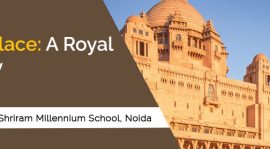
Welcome to Umaid Palace,...

Hey adventurer! Pondicherry will...
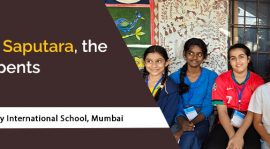
Today, we visited Saputara,...
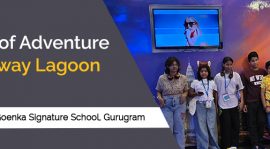
Imagine a full day...
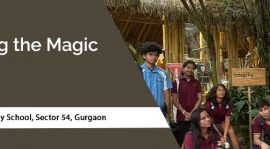
The Bali experience was...
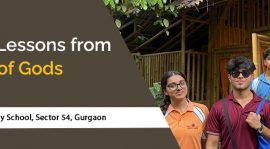
To quote Saint Augustine,...
See What Our Edventurers Experience!
3 Responses to DIARY OF A SCUBA DIVING STUDENT